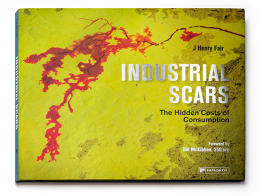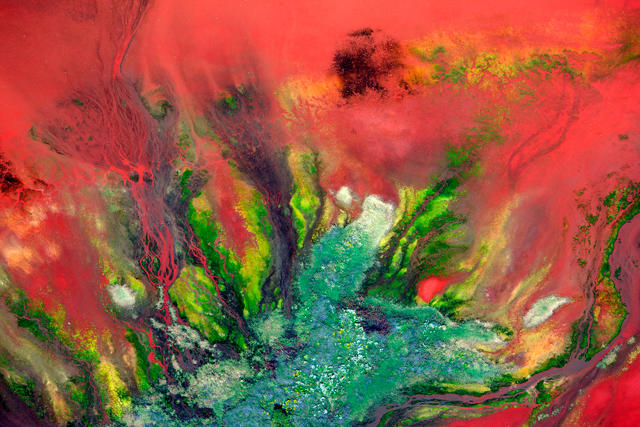
These Photos Make Deadly Industrial Pollution Look Eerily Beautiful
J. Henry Fair's work documents industrial production from above. It's a sobering look at how much we're altering the environment.
Recent posts
NatGeo And History Channel Present Their Takes On Obama’s Legacy
Dutch Railways' Electric Trains Now Run On 100% Wind Energy
100 Years Of Infographics From National Geographic
Adele Peters 01.04.17 6:00 AM
Shot from above, a photograph of a waste pond at a bauxite mine in Louisiana—part of the process that makes aluminum for soda cans or laptops—looks like an abstract painting. The vivid colors of the sludge come from heavy metals that run the risk of leaking into nearby waterways over time.

"I'm hoping that the pictures will make people stop and ask a question: What is that?" says photographer J. Henry Fair, who has been documenting industrial production in aerial photos for two decades. "If I create this abstract expressionist image, which is arresting, then I can hopefully make people consider it."
Fair thinks that art might be a way to reach those who tune out standard coverage of environmental issues.
"We're in a period in the history of the U.S. in which dialogue has failed," he says. "People shout at each other across the aisle and we see reinforcement of extreme viewpoints instead of a coming together. I feel that art can transcend that failed dialogue."
With each image shared in his new book, Industrial Scars, Fair includes data about the processes he documents, explaining how oil is excavated from tar sands in Canada, or how copper is treated at a massive mine in New Mexico.

At a coal plant near his hometown of Charleston, South Carolina, he documented the coal ash that has contaminated local drinking water with arsenic and mercury. (The plant was since closed, though the pollution remains.)
Though the coal plant was also a contributor to climate change, he thinks it's more useful to start by talking about something like drinking water. "Sometimes I talk about things that we all know about and can concur on, for instance, mercury in our fish," he says. "We all know that's bad. And the fact that we can't eat the fish or drink the water, well, I think we can generally agree that that's a bad thing."
His hope is that the photos can prompt viewers to think about the long chain of effects caused by consumption, whether they're buying a new smartphone or a roll of recycled toilet paper.
"The message of these pictures is that possibly the greatest impact we can have has to do with how we spend our dollars," he says. "If we buy a roll of toilet paper made from post-consumer material, we're supporting a product stream that will save habitat. By saving habitat, we're actually saving ourselves."
[Photos: J. Henry Fair. Flights: SouthWings, LightHawk]
No comments:
Post a Comment